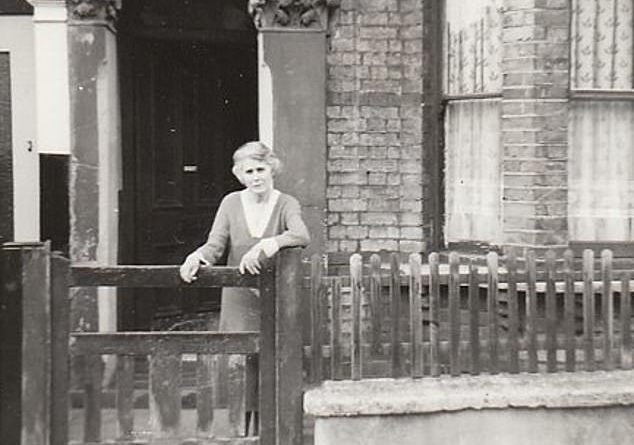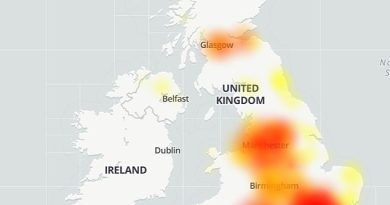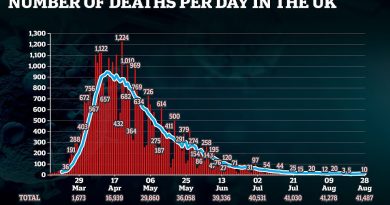The real-life ghost story so gripping even sceptics are drawn in
It is the ghost story that has even skeptics asking questions.
In 1956, in a semi-detached home in Battersea, south London, the Hitchings family began hearing strange, unexplained bangs and scratching sounds. Some of the noises were so loud, they could be heard by the whole street.
Then, objects began moving without being touched. Pots and pans were thrown out of seemingly empty rooms; bedsheets flew off beds without warning and slippers were seen ‘walking’ across the floor.
As time wore on – the haunting spanned a period of 12 years – the residents at 63 Wycliffe Road named the presence ‘Donald’.
The case became front page news, with much of the attention focused on Shirley, the teenage daughter of Wally and Kitty Hitchings who found herself at the centre of the seemingly paranormal activity. It was even discussed in the House of Commons.
Scrawled writing appeared on the wall, fires were started out of thin air and a handwritten note was found inside a notebook. It read: ‘Shirley, I come.’
Now the case has captured the public’s imagination once again with the release of the Battersea Poltergeist, a BBC R4 podcast which has become one of the broadcaster’s most popular titles in the week since its release.
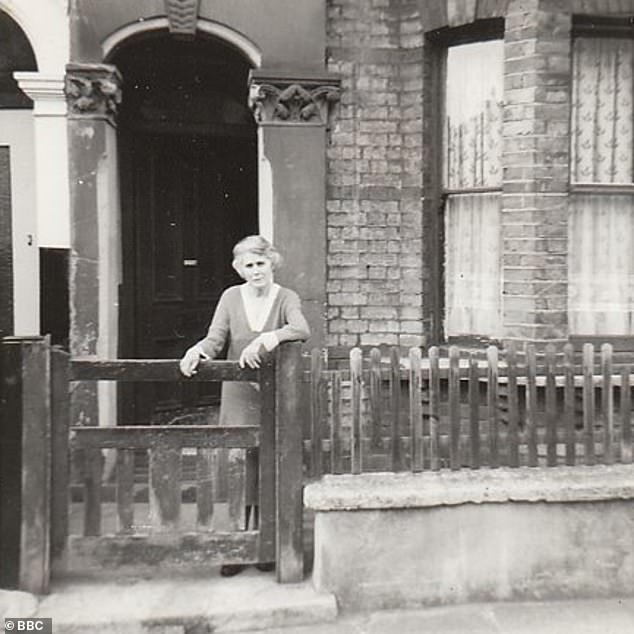
Haunted: The semi-detached property at 63 Wycliffe Road that was ‘haunted’ by Donald for 12 years from 1956. Pictured, Kitty Hitchings, who lived there with her husband and family
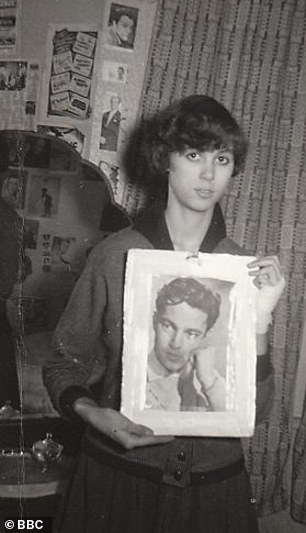
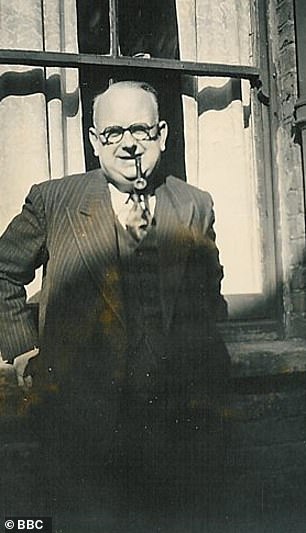
Key characters: The case became front page news, with much of the attention focused on Shirley, the teenage daughter of Wally and Kitty Hitchings who found herself at the centre of the seemingly paranormal activity. It was even discussed in the House of Commons. Pictured, Shirley (left) and ghost hunter Harold Chibbett, who investigated the case
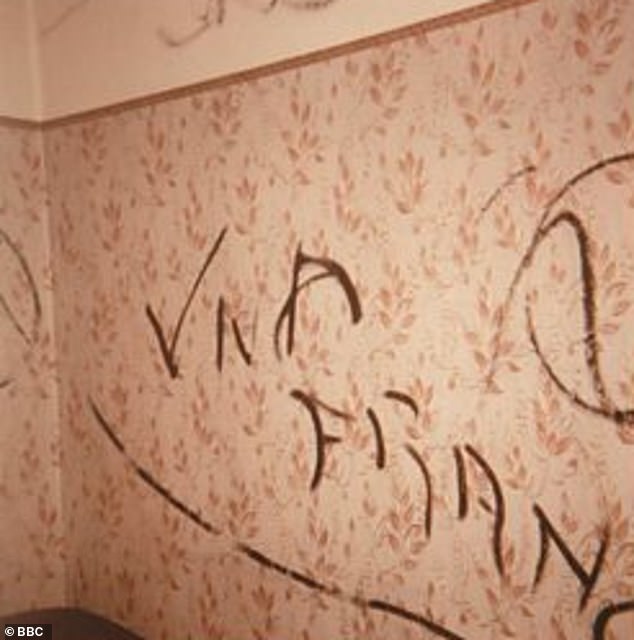
Unexplained happenings: The Hitchings family found these marks scrawled on the wall of the family home. The case is explored in BBC podcast The Battersea Poltergeist
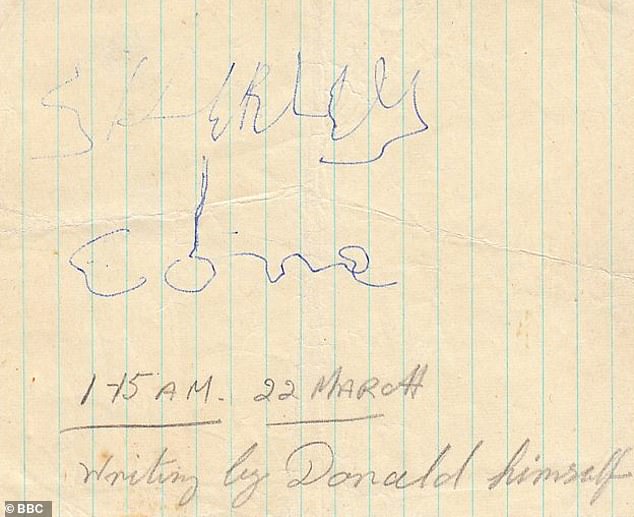
A note from the beyond? A handwritten message found in a notebook reading ‘Shirley, I come’
Presented by Danny Robins, the Battersea Poltergeist switches between a present-day investigation of the case, drawing on the knowledge of experts including psychology professor Ciaran O’Keefe and writer and parapsychologis Evelyn Hollow, and a dramatisation of the original events.
Shirley, now 80, is voiced by teenage His Dark Materials star Dafne Keen, while Toby Jones plays Harold Chibbett, a respected ghost hunter and First World War veteran who dedicated the latter years of his life to investigating the case.
It all began one night in early 1956 when a loud bang ricocheted through the Hitchings’ house.
Living at the property along with Wally, Kitty and their teenage daughter was Wally’s mother, Ethel, and a male family member, who is referred to simply as ‘Mark’ in Shirley’s memoirs.
The noise was so loud that the neighbours came to complain, thinking the Hitchings were responsible. It became a nightly occurrence and soon scratch
ing and tapping sounds could be heard, apparently following Shirley around the house.
Next came the objects. ‘We’re talking about a clock floating through the air. We’re talking about pots and pans being thrown from a room that nobody was in,’ said series expert Evelyn Hollow in an interview with the BBC.
‘Rooms are trashed. The house must have looked like a bloody warzone. It’s a truly wild case.’
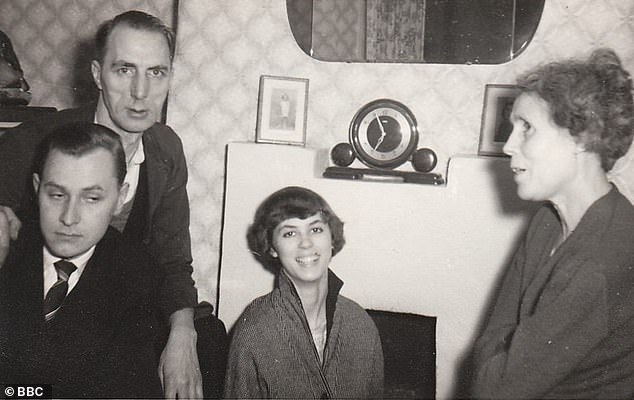
Spooky goings on: The Hitchings family in the front room of the property in 1957
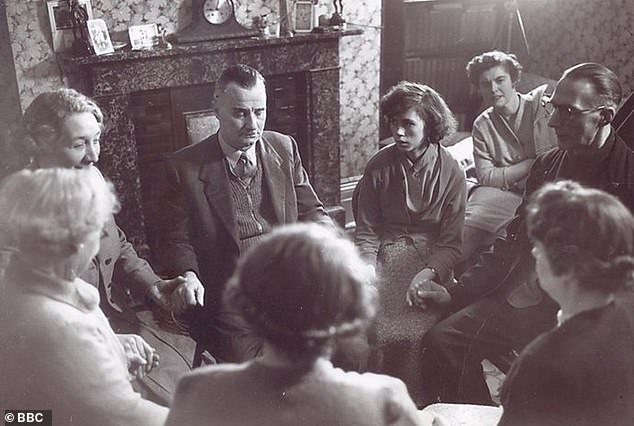
Taking steps: Medium Harry Hank sits in the centre, Shirley and her father Wally are on the right. The family did all they could to try and rid the house of the seemingly evil spirit
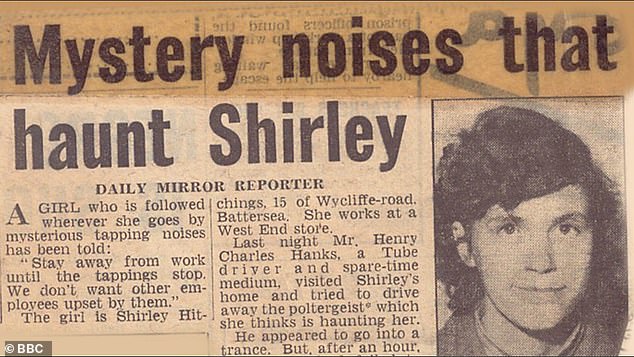
Front page news: A Daily Mirror article from 20 February 1956, the first time the case appeared in print. It went on to make national headlines and was even discussed in Parliament
Mr Hitchings hired an exorcist and the media swarmed around the story. Shirley was interviewed on TV and some outlets claimed Donald was her ‘ghostly boyfriend’.
People thought Shirley was behind the unexplained happenings, but she insists she had nothing to do with them.
‘Everybody was pointing the finger at me,’ she said in a recent interview with the Sun. ‘I knew I was not doing this. I’d always been brought up to be honest and never lie. Dad asked me at one point if it was me and I told him no. He said, “That’s good enough for me”.’
The podcast also explores the roll of Mr Chibbett, who Evelyn describes as the ‘Jay Gatsby’ of ghosts.
He was friends with Sir Arthur Conan Doyle, Arthur C Clarke, and magician Aleister Crowley, and made extensive notes about the case which were recovered by Shirley after his death and passed on to Danny and the team for the podcast.
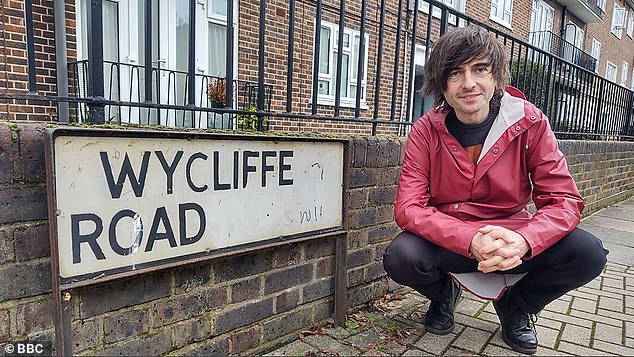
Fresh light: Presented by Danny Robins, pictured, the Battersea Poltergeist switches between a present-day investigation of the case, and a dramatisation of the hauntings
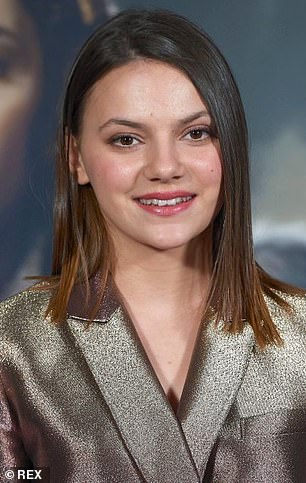
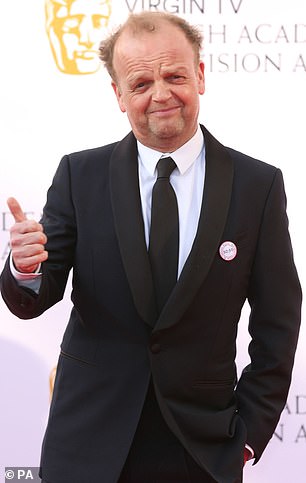
Stars: Shirley, now 80, is voiced by teenage His Dark Materials star Dafne Keen (left), while Toby Jones plays Harold Chibbett, a respected ghost hunter and First World War veteran who dedicated the latter years of his life to investigating the case
Shirley has described how Mr Chibbett helped ‘tame’ Donald. Over time the poltergeist began writing to Shirley.
He even
made a bold claim about his identity, which is revealed in a later episode of the podcast.
By the end of the series, the team put forward several theories about what actually took place at the property, which was demolished in the 1960s.
‘Every time you think you’ve a handle on this case it throws up something else,’ Robins said in an interview with the Daily Telegraph.
‘I considered myself more of a sceptic. But in this case I find myself up against things I find hard to explain.’
The Battersea Poltergeist is available on BBC Sounds

